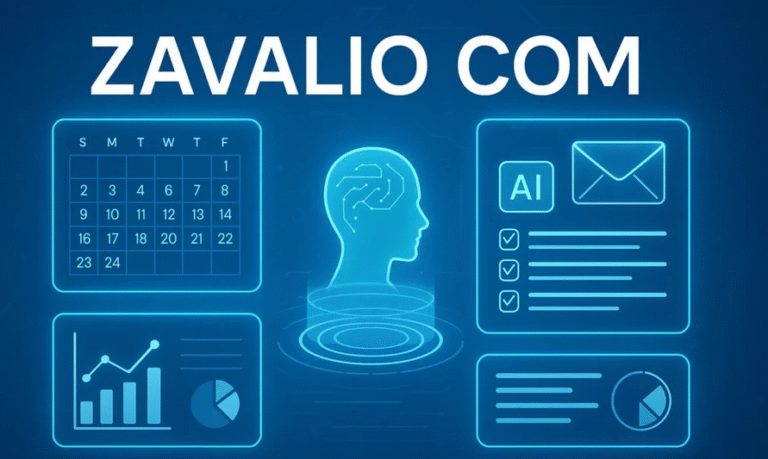Personalization in Video Ads: Beyond “Hello [Name]”
Personalization in marketing has come a long way from the days of simply inserting a customer’s first name into an email subject line. Today, personalization is about creating experiences that feel uniquely relevant, timely, and meaningful. For video ads, this shift is especially important. Viewers scroll quickly, and generic content gets ignored. Personalized video ads, on the other hand, grab attention, foster engagement, and drive conversions like never before.
In this blog, we will explore the rise of personalized advertising, the power of data-driven personalization in video, AI’s role in making scalable personalization possible, ethical considerations, and real-world success stories of brands doing personalization right.
The Rise of Personalized Advertising
Personalized advertising is no longer a nice-to-have; it is expected. Audiences now respond better to ads that feel tailored to their preferences, behaviors, or past interactions. Video ads are particularly well-suited for this because they combine visuals, motion, and narrative in a way that can be customized for each viewer.

Consider this: a user who loves fitness content sees a short video ad highlighting a new running shoe with tips for training. Another viewer, interested in home workouts, sees a different version emphasizing at-home routines. Both ads tell a story, but each resonates with the individual.
This level of personalization is far more effective than generic messages. It increases engagement, strengthens brand perception, and ultimately drives conversions. Brands that ignore this trend risk being overlooked in a crowded digital landscape.
Data-Driven Personalization in Video
Data is at the heart of effective personalized video ads. By analyzing customer behavior, purchase history, browsing patterns, and demographic information, marketers can create videos that speak directly to individual preferences.
Key elements of data-driven personalization in video include:
- Dynamic Content: Different visuals, text, and product recommendations are shown based on viewer data. For example, an e-commerce brand can showcase products a user has browsed or similar items they might like.
- Behavior-Based Messaging: Ads change depending on past actions. A viewer who abandoned a shopping cart might see a different message than someone who recently made a purchase.
- Contextual Personalization: Location, device type, and time of day can influence the content and format of the video ad. For example, a coffee shop might target morning viewers with a short video highlighting a new breakfast combo.
Data-driven personalization ensures that video ads are not only relevant but also timely, enhancing engagement and driving higher ROI compared to generic campaigns.
AI’s Role in Scalable Personalization
Personalizing video content at scale used to be daunting. Producing multiple versions of a video manually is expensive and time-consuming. This is where AI ad creators, like Quickads, have revolutionized the process.
AI enables marketers to automate the creation of personalized video ads by using algorithms that analyze audience data and generate multiple variations efficiently.
How AI supports scalable personalization:
- Automated Video Variations: AI can generate different versions of a single video, changing visuals, text, or narrative to suit individual viewers.
- Predictive Personalization: AI analyzes which elements of a video resonate with different segments and suggests optimizations to improve engagement.
- Real-Time Adaptation: AI allows ads to change dynamically based on live user behavior, creating an experience that feels custom in the moment.
- Cross-Platform Optimization: AI ensures personalized videos perform optimally on platforms like TikTok, Instagram, YouTube, or Facebook, maintaining clarity and impact across formats.
By leveraging AI ad creators, marketers can scale personalization without compromising creativity or quality, making every viewer feel like the video was made just for them.
Ethical Considerations
While personalization is powerful, it comes with responsibility. Consumers are increasingly aware of how their data is used, and misuse can harm trust and brand reputation.
Key ethical considerations for personalized video ads include:
- Transparency: Let viewers know why they are seeing a specific video. For example, a caption like “Recommended for you based on your recent activity” provides clarity.
- Data Privacy: Comply with regulations like GDPR or CCPA, and ensure user data is stored securely and used responsibly.
- Avoid Over-Personalization: Too much personalization can feel creepy or intrusive. Balance relevance with respect for privacy.
Ethical personalization not only safeguards your brand but also strengthens engagement by building trust. Viewers are more likely to respond positively when they feel respected and understood.
Success Stories
Several brands have successfully leveraged personalization in video ads to drive engagement and conversions:
1. Netflix
Netflix personalizes video previews for different users based on viewing history. The same show may have multiple trailers, each highlighting a different aspect of the story that aligns with the viewer’s interests. This approach increases watch time and subscriptions.
2. Amazon
Amazon’s personalized product videos showcase items based on past browsing or purchase behavior. Viewers see content that feels relevant, increasing the likelihood of click-throughs and purchases.
3. Coca-Cola
Coca-Cola ran a campaign with personalized videos featuring individual names or locations in a subtle, fun way. While simple, the personal touch drove engagement and social sharing, enhancing brand visibility.
These examples demonstrate that personalization goes beyond inserting a name. It is about tailoring the story, visuals, and messaging to each viewer in a meaningful way.
Final Thoughts

Personalization in video ads is no longer optional for marketers looking to stand out. Moving beyond “Hello [Name]” allows brands to deliver relevant, engaging, and memorable experiences that resonate with audiences and drive results.
Data-driven personalization, combined with AI ad creators like Quickads, makes scalable, tailored video content achievable. When executed responsibly, personalized video adsenhance engagement, boost conversions, and strengthen brand loyalty without compromising trust.
The future of digital advertising belongs to brands that understand the power of relevance and the art of personalization. By leveraging audience data, AI tools, and ethical practices, marketers can ensure that every video ad feels like it was made just for the viewer.
In the battle for attention, relevance is the ultimate currency, and personalization is the key to earning it.






